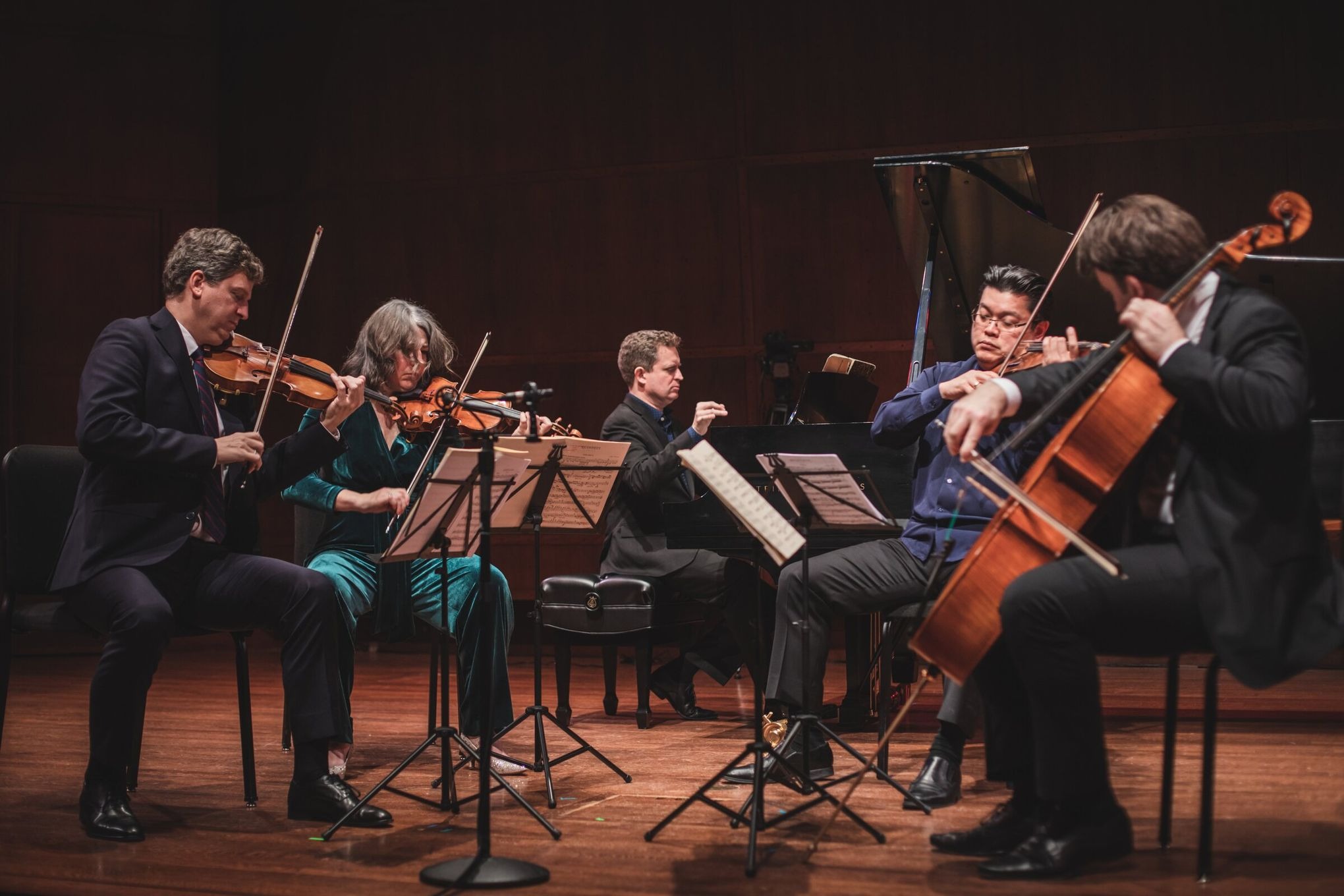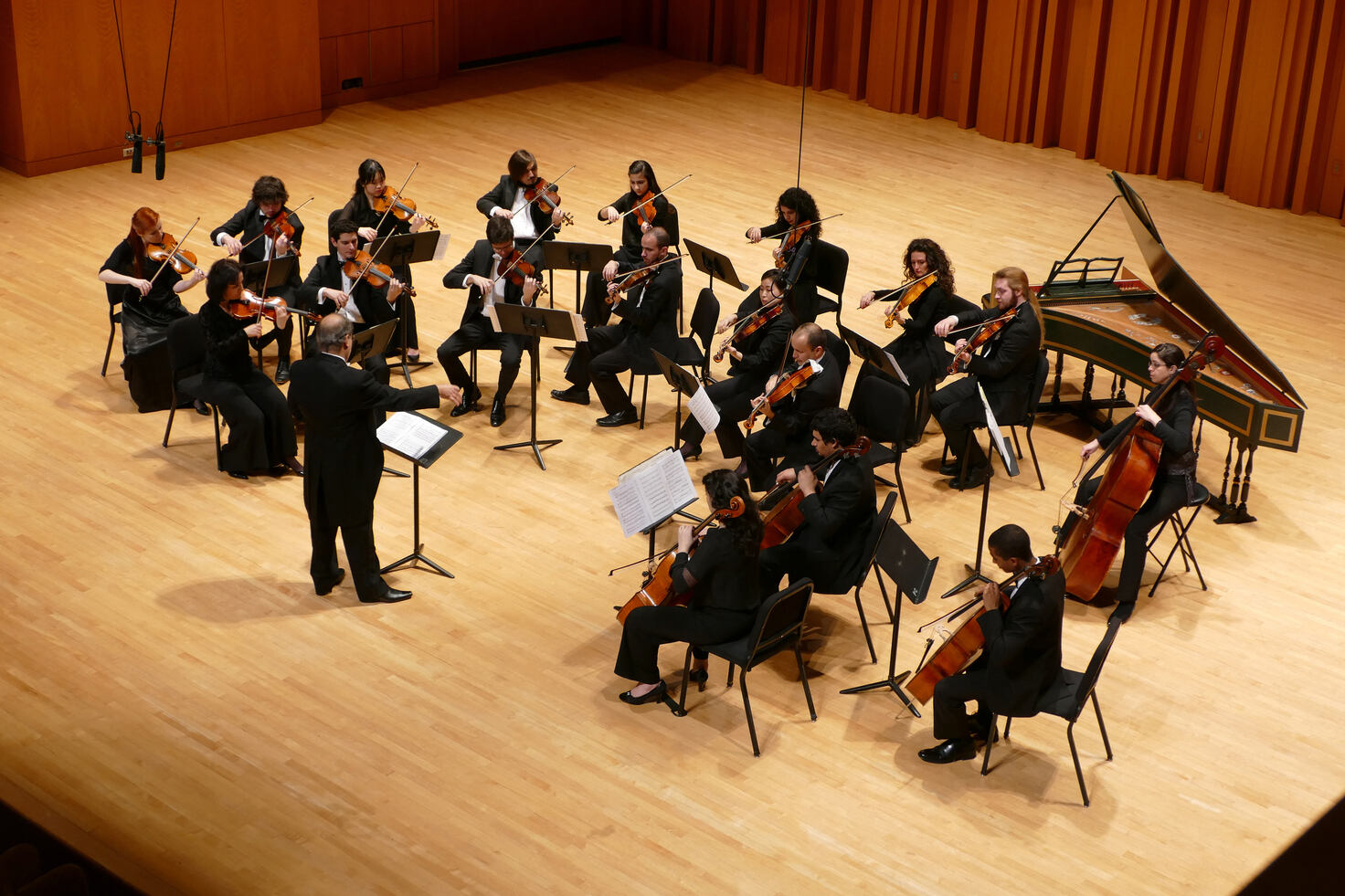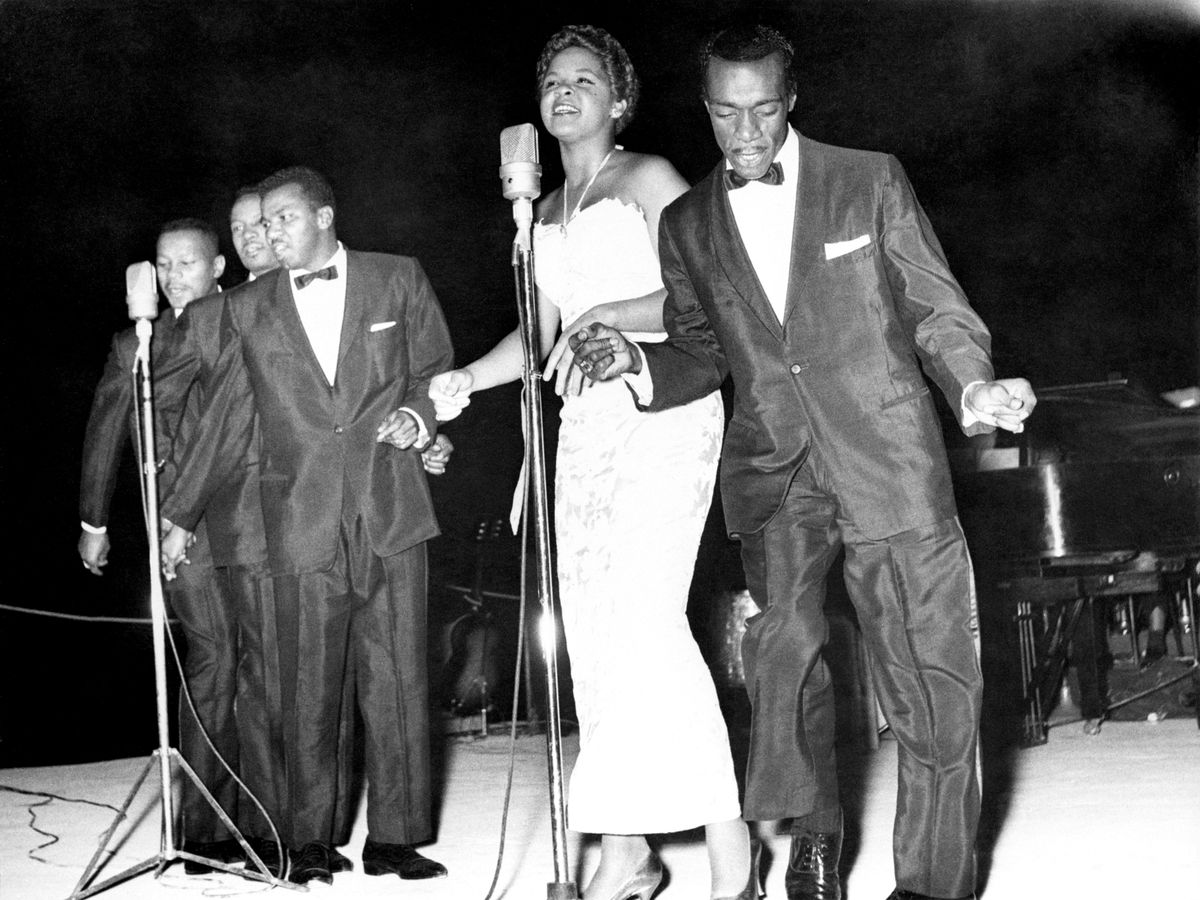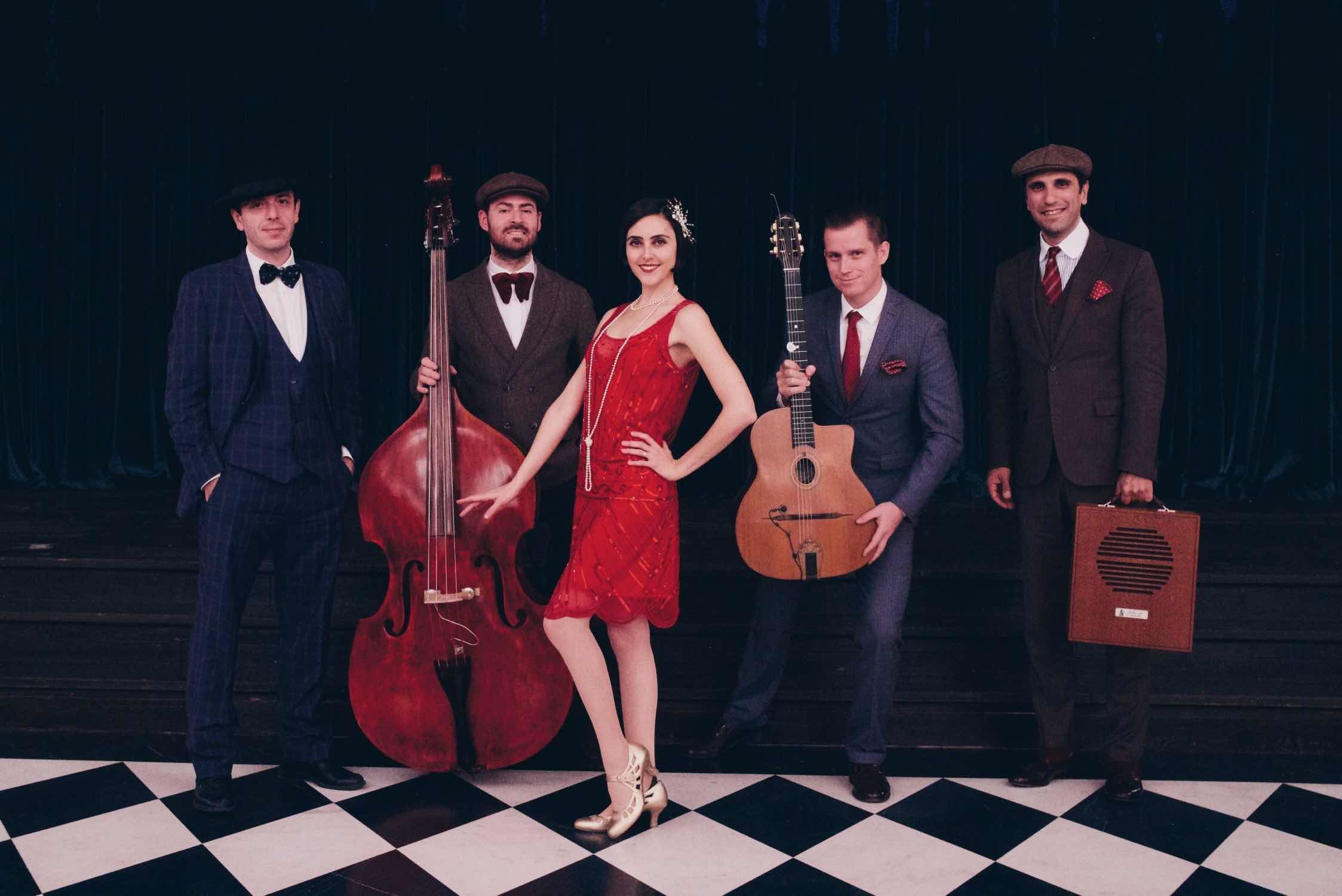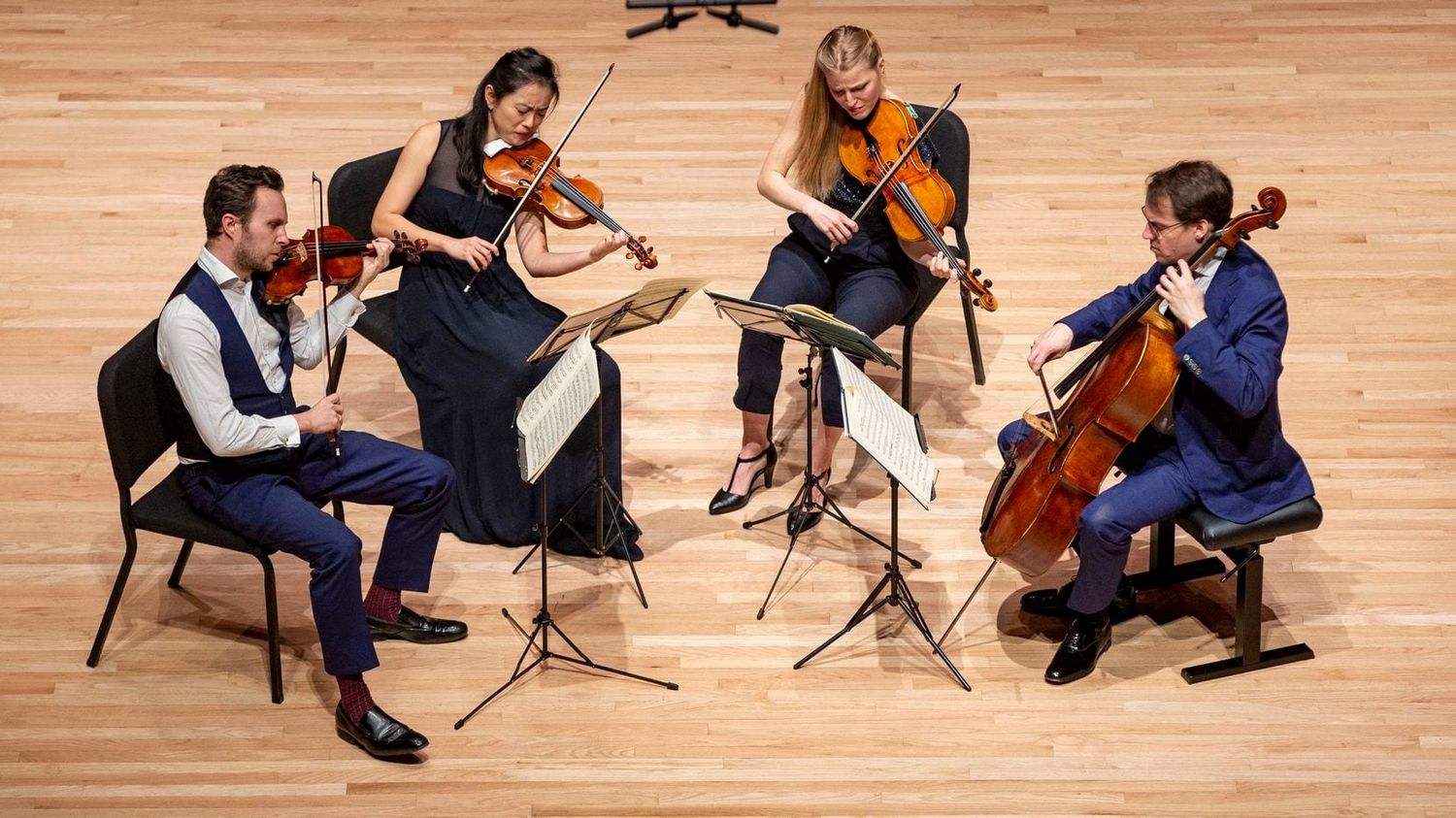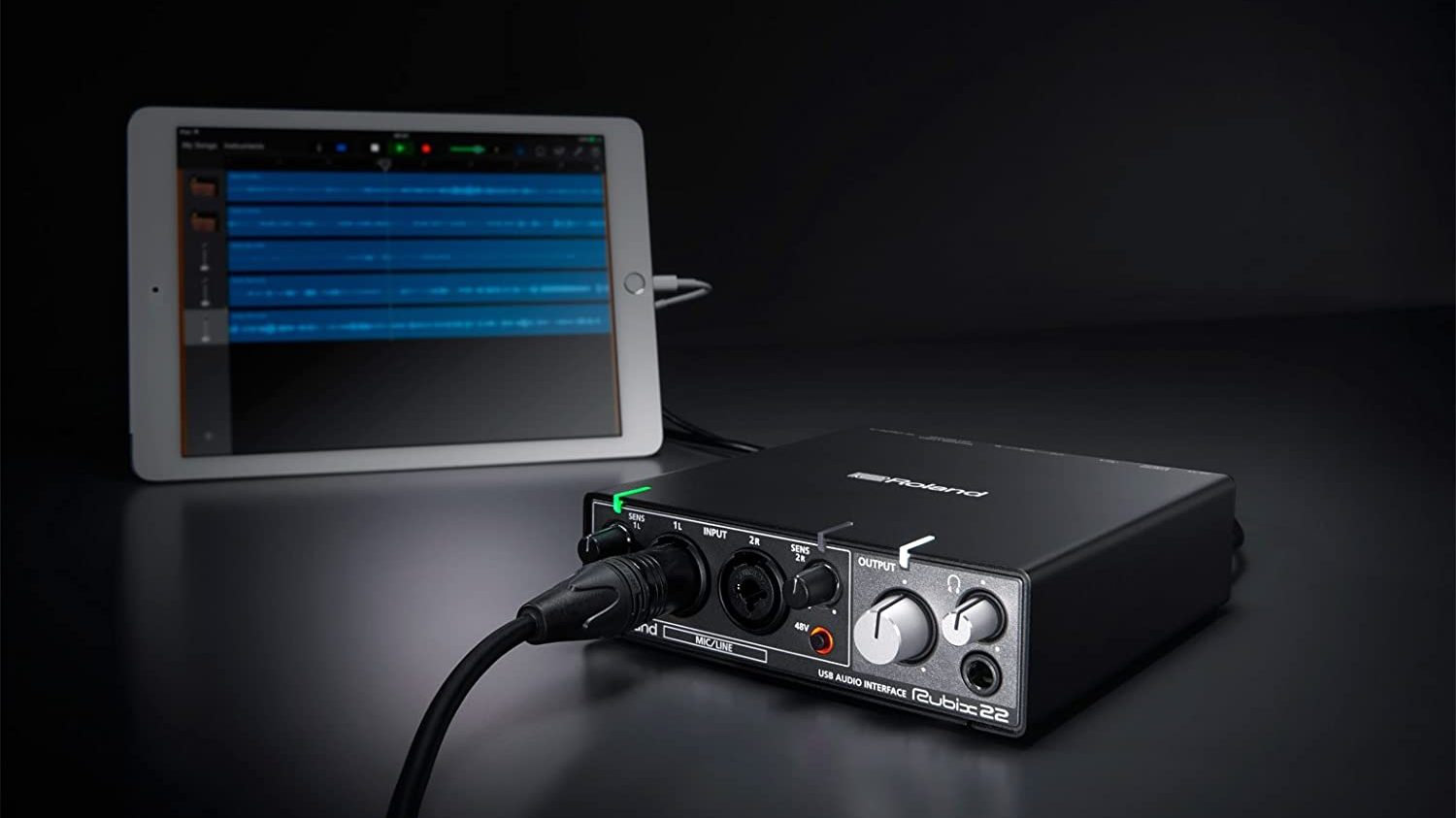Home>Events & Info>Chamber Music>What Ways Did Chamber Music Increase In Popularity In The Late Eighteenth Century?


Chamber Music
What Ways Did Chamber Music Increase In Popularity In The Late Eighteenth Century?
Published: January 4, 2024
Discover the rise of chamber music in the late 18th century and how it gained popularity. Explore the ways this genre captivated audiences with its intimate and collaborative performances.
(Many of the links in this article redirect to a specific reviewed product. Your purchase of these products through affiliate links helps to generate commission for AudioLover.com, at no extra cost. Learn more)
Table of Contents
Introduction
Chamber music, with its intimate and nuanced character, is a genre of classical music that has remained beloved throughout history. It is a form of music performed by a small group of musicians, typically between two to nine players, in a small, intimate setting such as a chamber or a salon. While orchestral music often steals the spotlight, chamber music has its own distinctive charm and has played a significant role in the development of classical music.
The late eighteenth century marked a period of considerable growth and popularity for chamber music. During this time, various factors converged to contribute to its increasing recognition and appreciation. This article explores some of the key elements that propelled chamber music into the limelight during this period, shedding light on the cultural, social, and technological influences that shaped the genre.
From the influence of aristocratic patronage to the emergence of public concerts, the rise of musical societies, and the impact of Enlightenment ideals, chamber music experienced a remarkable transformation in the late eighteenth century. These developments not only fueled its popularity but also paved the way for its enduring legacy in the centuries to come.
The Role of Aristocratic Patronage
One of the primary drivers behind the increased popularity of chamber music in the late eighteenth century was the support and patronage of aristocratic elites. Wealthy nobles, such as royalty and aristocrats, played a crucial role in promoting and funding musical activities, including chamber music performances.
During this era, aristocrats were not only enthusiastic patrons of the arts but also accomplished musicians themselves. Many members of the nobility had a genuine love for music and actively participated in making music. They would often gather musicians and composers in their salons, where they would enjoy chamber music performances in an intimate setting.
This patronage system provided financial support for composers and musicians, enabling them to focus on their craft and produce high-quality chamber music compositions. Composers, such as Mozart and Haydn, found favor with aristocratic patrons who commissioned works specifically for their private concerts and gatherings.
Moreover, aristocratic patronage helped establish connections and networks within musical circles. Musicians and composers had the opportunity to collaborate, exchange ideas, and gain exposure to a wider audience through the connections of their noble patrons.
Additionally, aristocracy played a significant role in promoting chamber music as a refined and sophisticated art form. By showcasing their passion for music through hosting private concerts and gatherings, the nobility elevated the status of chamber music in the eyes of society. As the aristocracy held considerable influence over societal trends, their support and endorsement of chamber music contributed to its growing prestige and desirability.
Ultimately, the unwavering support and patronage of aristocratic elites nurtured the development of chamber music. Without their financial backing and advocacy, it is unlikely that composers would have been able to produce their masterpieces, and the genre may not have gained the recognition and popularity it did during the late eighteenth century.
The Emergence of Public Concerts
In the late eighteenth century, the emergence of public concerts played a pivotal role in increasing the popularity of chamber music. Prior to this period, music performances were predominantly held in private settings, such as the salons of aristocrats. However, the rise of public concerts brought chamber music to a wider audience and transformed it into a more accessible and inclusive form of entertainment.
Public concerts offered a platform for musicians to showcase their talents and for audiences to experience the beauty and intricacy of chamber music. These concerts often took place in purpose-built concert halls, which were designed to optimize the acoustics and enhance the musical experience for both performers and listeners.
Unlike private performances, public concerts were open to anyone who could afford a ticket. This democratization of access to chamber music allowed people from various social backgrounds to enjoy and appreciate the genre. It also heralded a shift in the perception of music as an art form that could be enjoyed by the masses, not solely the privileged aristocracy.
Public concerts also provided musicians with a platform for self-promotion and professional development. By performing in front of a larger audience, they gained exposure and could attract the attention of potential patrons or secure future engagements. This increased visibility and recognition further fueled the popularity of chamber music.
Moreover, public concerts introduced a sense of community and shared experience among the audience. People from all walks of life would gather together to listen to chamber music, fostering a collective appreciation for the art form. These concerts became social events, where individuals could connect with others who shared a passion for music, creating a vibrant and engaging atmosphere.
The emergence of public concerts served as a catalyst for the dissemination and promotion of chamber music. As the genre became more accessible and widely appreciated, its popularity grew exponentially, leading to a flourishing of new compositions and a deeper appreciation for the nuances and beauty of chamber music.
Influence of Musical Societies
One of the key factors that contributed to the increased popularity of chamber music in the late eighteenth century was the emergence of musical societies. These organizations, composed of music enthusiasts and professionals, played a critical role in fostering the appreciation and performance of chamber music.
Musical societies provided a platform for musicians to come together, collaborate, and share their love for chamber music. These societies organized regular concerts, often featuring chamber music performances, which allowed musicians to showcase their skills and repertoire to a dedicated audience.
One notable example is the London-based organization, the Professional Concerts, later known as the Philharmonic Society. Founded in 1813, the society dedicated itself to promoting chamber music by hosting regular concerts specifically focused on the genre. Their concerts featured both established composers and rising talents, making chamber music a central part of their programming.
Musical societies also acted as important educational institutions, offering workshops, masterclasses, and lectures on chamber music. These educational activities helped expand the knowledge and understanding of the genre among both musicians and audiences. By providing opportunities for musicians to learn and improve their craft, musical societies played a vital role in nurturing talent and encouraging the growth of chamber music.
Furthermore, musical societies actively engaged in the commissioning of new chamber music compositions. By supporting composers and providing them with commissions, these organizations contributed to the expansion of the chamber music repertoire. This encouraged composers to explore new musical ideas and pushed the boundaries of the genre, attracting even greater interest and enthusiasm from audiences.
Not only did musical societies promote chamber music within their local communities, but they also facilitated cultural exchange and collaboration across regions and nations. Through their organized concerts and events, musicians from different backgrounds and nationalities had the opportunity to perform and interact with one another, fostering a dynamic and vibrant chamber music culture.
The influence of musical societies in the late eighteenth century cannot be overstated. Their dedication to chamber music through regular performances, education, and commissioning initiatives helped establish the genre as a respected and integral part of the classical music landscape.
The Rise of Amateur Musicians
In the late eighteenth century, there was a notable rise in amateur musicians, which greatly contributed to the popularity and accessibility of chamber music. Unlike professional musicians who relied on performance as their livelihood, amateur musicians pursued music as a passion and a means of personal expression.
Amateur musicians played a pivotal role in the growing appreciation for chamber music by actively participating in informal music-making sessions. These gatherings, known as musicales, provided a platform for amateur musicians to come together and perform chamber music in a relaxed and supportive environment.
The rise of amateur musicians led to an increase in demand for chamber music compositions that were suitable for small ensembles. Composers began to cater to this growing market and produce works specifically tailored for amateur performers. This resulted in a rich and diverse repertoire that catered to a range of skill levels, making chamber music accessible to a wider audience.
Additionally, the participation of amateur musicians in chamber music had a democratizing effect on the genre. It blurred the line between performer and audience, as many amateur musicians would invite friends and family to their musicales, creating an intimate and inclusive atmosphere. This further heightened the popularity of chamber music and fostered a sense of community among music enthusiasts.
The rise of amateur musicians also had a profound impact on music education. As individuals sought to improve their musical skills, the demand for music teachers increased. This led to the establishment of music schools and private instruction, allowing aspiring amateur musicians to receive formal training and guidance.
Furthermore, the involvement of amateur musicians in chamber music helped dispel the notion that music was exclusively for professionals or the elite. It emphasized the idea that music was a universal language that could be enjoyed and shared by people from all walks of life. This shift in perception contributed to the democratization of chamber music and its increased popularity among a broader audience.
Amateur musicians continue to play a vital role in the chamber music scene today. Their passion and love for music contribute to the vibrant and thriving community of chamber music enthusiasts. Without their active participation, the genre would not have gained the widespread appeal and enduring popularity it enjoys today.
Technological Advancements and Sheet Music Publication
In the late eighteenth century, technological advancements in printing and distribution had a significant impact on the popularity and accessibility of chamber music. One of the key developments during this period was the improvement of printing techniques, which facilitated the mass production of sheet music.
Before this time, sheet music was primarily handwritten, making it a time-consuming and costly process. However, with the advent of printing technology, sheet music could now be reproduced more quickly, efficiently, and at a lower cost. This made chamber music compositions more widely available, allowing musicians and music enthusiasts from different regions to access and perform the music.
The availability of printed sheet music also led to the establishment of publishing houses specialized in music publications. Composers could now work with publishers to have their chamber music compositions printed and distributed to a wider audience. This partnership between composers and publishers played a crucial role in the dissemination of new chamber music works and contributed to the growth of the genre.
Moreover, technological advancements in transportation and trade facilitated the distribution of sheet music to distant locations. Composers could now reach a global audience, and chamber music compositions began to travel across borders, contributing to the international recognition and popularity of the genre.
The widespread availability of sheet music also empowered amateur musicians who aspired to perform chamber music. They could now purchase or borrow sheet music to learn and practice at their own convenience. This accessibility to sheet music expanded the pool of performers and further contributed to the rise of amateur musicianship.
Additionally, advancements in musical notation and engraving techniques improved the readability and accuracy of printed sheet music. This ensured that performers had access to high-quality and reliable editions of chamber music compositions, enhancing the overall performance experience.
Technological advancements in the printing and distribution of sheet music revolutionized the accessibility and popularity of chamber music in the late eighteenth century. Composers could now share their music with a wider audience, and musicians of all skill levels could access and perform chamber music compositions. This accessibility helped foster a vibrant and dynamic chamber music culture, accelerating its popularity and ensuring its enduring presence in the classical music repertoire.
Impact of Enlightenment Ideals
The Enlightenment, a cultural and intellectual movement in the late eighteenth century, had a profound impact on various aspects of society, including the arts. Chamber music, with its intimate and intellectual qualities, was not immune to the influence of Enlightenment ideals.
Central to Enlightenment thinking was the belief in reason, rationality, and the power of human intellect. This emphasis on reason and critical thinking was reflected in the composition and performance of chamber music during this period. Composers sought to create music that engaged the mind, evoked emotions, and stimulated intellectual reflection.
Enlightenment ideals also placed a strong emphasis on individualism and personal expression. This emphasis had a direct impact on the creation and performance of chamber music. Composers had the freedom to explore their individual artistic voices and express their unique ideas and emotions through their compositions. This led to a diversification of styles and forms within chamber music, with composers experimenting with new structures, harmonic progressions, and melodic lines.
Furthermore, the Enlightenment fostered a spirit of curiosity and exploration. This spirit extended to the way musicians approached chamber music performance. Musicians sought to uncover and interpret the intentions of the composer, delving into the depths of the music to uncover its hidden meaning. This pursuit of musical interpretation and expression allowed for a deeper connection between performer and listener, creating a more profound and engaging experience.
The Enlightenment also championed the idea of the public sphere and the power of public opinion. This had an impact on the reception and appreciation of chamber music. The genre, with its intimate and intellectual nature, became a symbol of sophistication and cultural refinement. As public interest in chamber music grew, it became a topic of discussion and debate in the public sphere, further elevating its status.
Additionally, the Enlightenment’s emphasis on education and knowledge led to an increased interest in music education and appreciation. People sought to expand their cultural horizons and engage in intellectual pursuits, including the study and practice of chamber music. This resulted in the establishment of music academies and schools, where individuals could receive formal training in chamber music performance and composition.
The impact of Enlightenment ideals on chamber music was profound. It influenced the creation, interpretation, and appreciation of the genre, leading to a flourishing of artistic expression and a deeper understanding of the power and significance of chamber music.
Conclusion
The late eighteenth century witnessed a remarkable increase in the popularity and recognition of chamber music. Various factors converged to shape this transformation, including the role of aristocratic patronage, the emergence of public concerts, the influence of musical societies, the rise of amateur musicians, technological advancements in sheet music publication, and the impact of Enlightenment ideals.
Aristocratic patronage provided financial support, connections, and prestige to chamber music, enabling composers to create and perform their works. Public concerts brought chamber music to a wider audience, democratizing access to the genre and creating a sense of community and shared experience among listeners. Musical societies organized regular concerts, education programs, and commissions, fueling the growth and development of chamber music.
The rise of amateur musicians expanded the pool of performers and contributed to the accessibility and popularity of chamber music. Technological advancements in printing and distribution facilitated the mass production and dissemination of sheet music, making it more widely available to musicians and music enthusiasts. Enlightenment ideals emphasized reason, individual expression, and intellectual exploration, influencing the composition, interpretation, and appreciation of chamber music.
In conclusion, the increasing popularity of chamber music in the late eighteenth century can be attributed to a combination of cultural, social, and technological factors. Through the support of aristocrats, the emergence of public concerts, the establishment of musical societies, the engagement of amateur musicians, technological advancements in sheet music publication, and the influence of Enlightenment ideals, chamber music evolved into a beloved and influential genre that continues to captivate audiences and shape the classical music landscape today.



